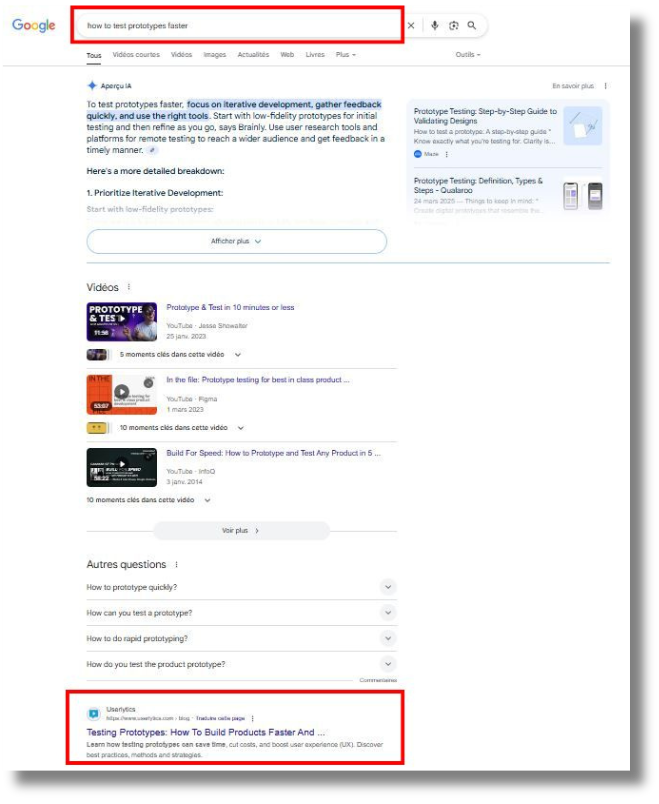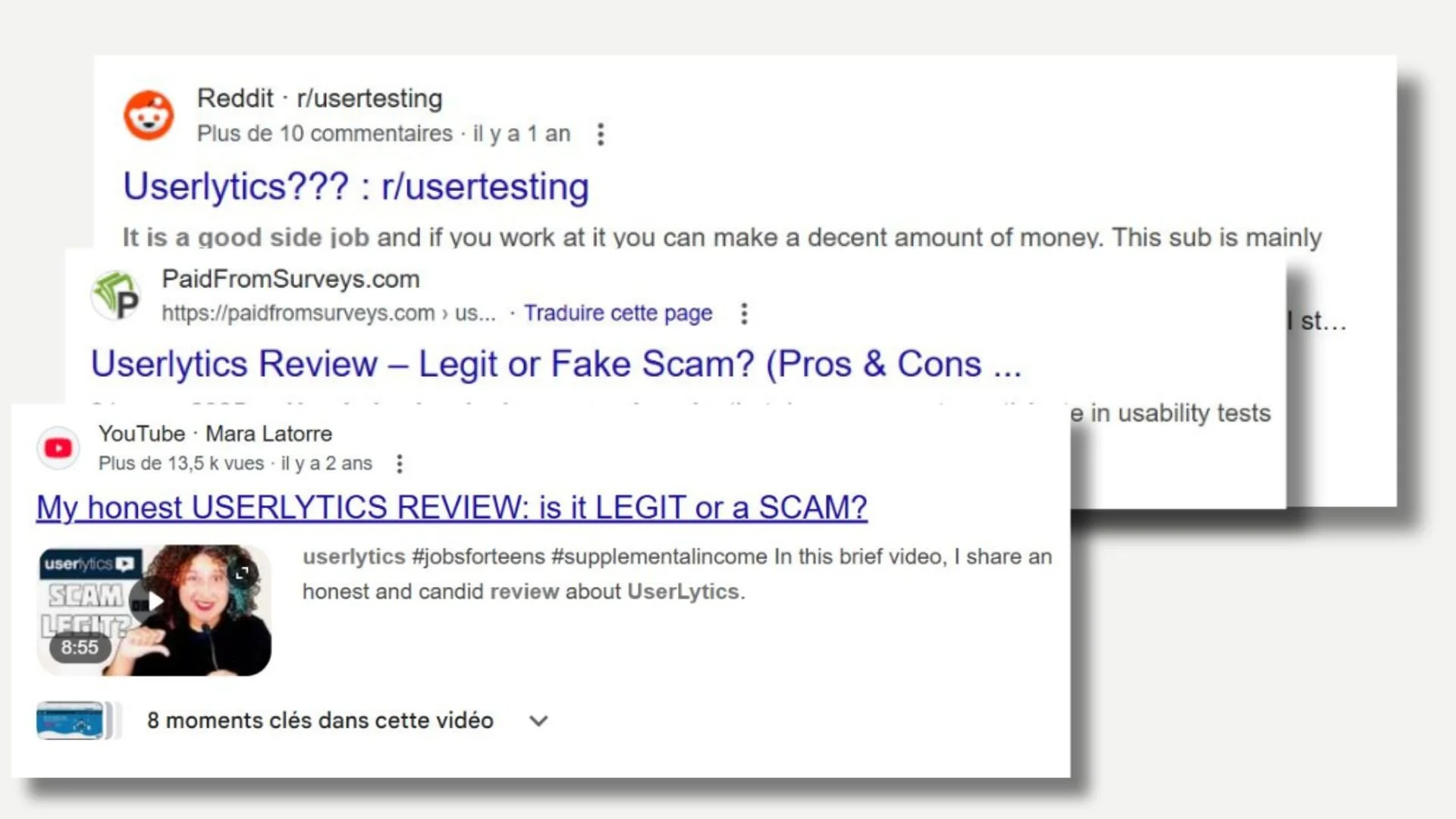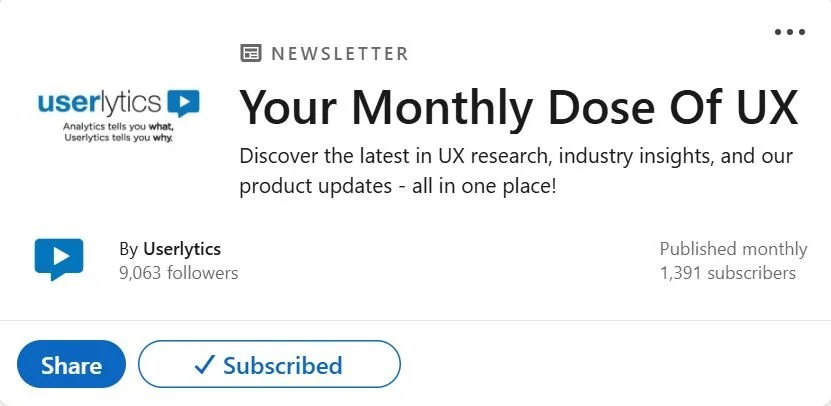From SEO Disaster to a 35% organic Traffic Surge at Userlytics
SEO · Lead Generation · Social Media Growth · Help Center Revamp · Brand Humanization · Audience Engagement
The Company
Name: Userlytics Corporation
Products & Services: Comprehensive Usability Testing & UX Research SaaS, Testers Panel of 2M+ users, UX Consulting services, proprietary ULX Benchmarking Score.
My Role: Head of Content
The challenge
After merging multiple subdomains into one, Userlytics saw their Google rankings tank.
We collaborated to rebuild their visibility, generate inbound leads, and (re)engage both prospects and existing users.
What I did
We diagnosed the damage first. Several pages were completely wiped off the Google Search results.
So we ran keyword and intent research with SemRush, built a content calendar around low-competition, high-volume queries, and improved site structure with the help of other key team members.
Alongside that, we optimized the website for mobile and faster load times, anchored our core topics by introducing FAQs and a glossary, and ran A/B tests on key landing pages. Last but not least, I mentored an intern and put him in charge of our backlinks strategy.
Results:
🔹 +35% organic traffic in 15 months
🔹 Ranking across key pages recovered
Turning traffic into leads
SEO and organic discoverability was just one part of the funnel. To support the sales team, we built high-performing lead magnets. One particular whitepaper, the State of UX In 2024, became the most downloaded piece of content in the company’s history.
Results:
🔹 5,000+ qualified leads generated in 15 months
Rebuilding self-serve support
The Help Center was one of the subdomains that was merged into the main website. This section was mostly text-based, which was not ideal. Our Account Managers received plenty of questions and support tickets for documentation that was already available.
We introduced video tutorials for top articles, communicated them aggressively to our audience, and updated existing help content to match the new product experience. These assets reduced reliance on support and improved the experience for our customers.
Putting faces to the brand
Another very important part of our content strategy was humanizing the brand. Userlytics lacked a human presence across its channels, which hurt our reputation, especially among panel testers.
To make this happen, we brought back the podcast, this time featuring internal team members, and targeted big names in the industry for interviews to build more credibility. We also put the spotlight on the CEO more often. These efforts helped the brand feel more genuine and less like a sales pitch.
We didn’t stop there. Webinars became a major piece of our efforts to humanize the brand, while also serving as a great lead-generation tool. We hosted a few high-quality webinars, and even managed to break our record attendance for signups twice in a row.
Repurposing for reach
We didn’t have the bandwidth to create content from scratch for every channel, so we repurposed long-form videos into short clips for LinkedIn. Using tools like OpusClip and ChatGPT, we transformed blog posts, webinars, whitepapers, and the podcast episodes I just mentioned into clips that matched the platform's tone.
Results:
🔹 37% LinkedIn organic follower growth (from 5K to 7K) in 12 months.
Keeping users engaged
We also wanted to engage existing users directly through email. To do so, we launched a curated monthly newsletter that included product updates, industry news, educational pieces, and a twist of humor. Open rates consistently sat above 50%, with some editions peaking over 80%.
We also posted them on LinkedIn and accumulated 1,300 subscribers in just 5 releases.






